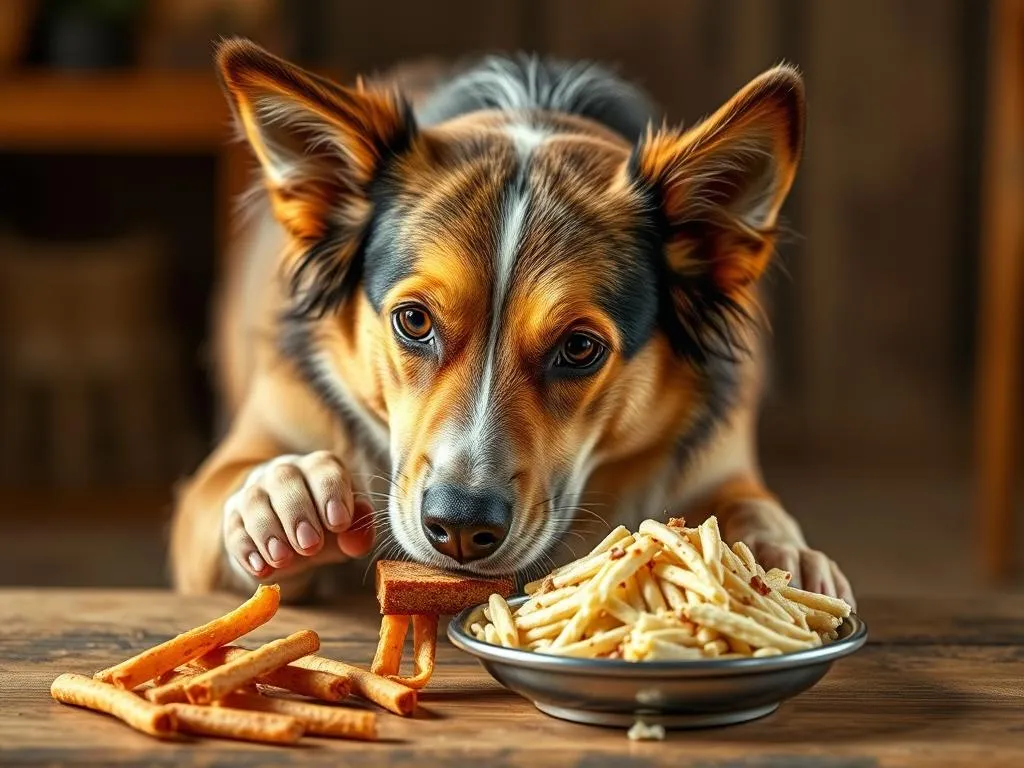
Understanding dog behavior, especially when it pertains to food, is crucial for responsible pet ownership. One of the more puzzling and often concerning behaviors you may observe is when a dog pushes food. This behavior can be both perplexing and frustrating, prompting many owners to ask, “why does dog push food?”
In this article, we’ll explore the various reasons behind this behavior, from natural instincts to potential health issues, and provide insights on how to assess and manage it effectively.
Understanding Dog Behavior
Overview of Canine Instincts
Dogs are descended from wolves, and many of their instincts reflect their scavenging and hunting ancestry. The drive to seek food, and the methods they use to do so, are deeply embedded in their behavior. Dogs were not only hunters but also scavengers, which means they had to adapt their eating habits based on availability and competition. Such instincts can manifest in behaviors like food pushing, digging, and even food guarding.
Understanding these instincts is essential for interpreting your dog’s actions. For instance, when a dog pushes their food, it may be instinctual behavior tied to their ancestral need to forage for food or to ensure they can consume it without threats from other animals.
Common Dog Behaviors Related to Food
Dogs exhibit a variety of behaviors during feeding time. In addition to pushing food, you may notice them digging at their bowls, guarding their food from other pets, or even hoarding food in secret spots around the house. Each behavior can signal different underlying issues—whether they stem from instinct, health problems, or environmental factors.
Reasons Why Dogs Push Food
Natural Instincts
One primary reason dogs may push food is due to their natural instincts. Pushing food can mimic foraging behaviors that wild canines engage in when searching for edible items. This instinct may be particularly pronounced in certain breeds that were originally bred for hunting or scavenging. When a dog pushes their food, they might be trying to manipulate it into a more accessible position, similar to how they would have to dig or nudge items in the wild to enjoy their meal.
Health Issues
While instinct plays a significant role in food pushing, it’s crucial to consider potential health issues. Certain medical conditions can lead to changes in behavior regarding food. For example:
- Dental Problems: If a dog has dental pain or oral infections, they may push food away because it hurts to chew.
- Gastrointestinal Issues: Dogs suffering from digestive problems might push away food because they associate it with discomfort.
Symptoms to watch for include excessive drooling, reluctance to eat, changes in stool consistency, or noticeable weight loss. If your dog shows these indicators alongside food pushing, it’s essential to consult a veterinarian.
Behavioral Factors
Stress and anxiety can also contribute to food pushing. Dogs are sensitive creatures, and changes in their environment—such as moving to a new home, the introduction of new pets, or alterations in routine—can lead to anxiety. This stress may manifest in various ways, including a reluctance to eat or behaviors like pushing food away.
Additionally, dogs might push their food in response to their surroundings. If their feeding area is noisy or chaotic, they may feel uncomfortable and push their food instead of eating it.
Social Dynamics
The social dynamics within a household can also influence why dogs push food. Dogs are social animals, and their behavior can be affected by their relationships with other pets. For instance, if a dog feels threatened or insecure about their place in the social hierarchy, they may push their food as a way to assert dominance or as a sign of submission. It’s essential to observe how your dog interacts with other animals during feeding times to determine if social dynamics play a role in their behavior.
Assessing Your Dog’s Food Pushing Behavior
Observing Your Dog
To understand why your dog pushes food, careful observation is key. Pay attention to when and how your dog exhibits this behavior. Is it only during mealtime, or does it occur during playtime as well? Note any changes in their behavior before, during, and after feeding. Do they seem anxious, distracted, or uninterested? These observations can provide valuable insights into their state of mind and help identify any underlying issues.
Consulting a Veterinarian
If you suspect that your dog’s food pushing is related to health concerns, it’s important to consult a veterinarian. A professional will perform a thorough evaluation, which may include:
- A physical examination
- Dental check-ups
- Blood tests to rule out gastrointestinal or metabolic issues
Early intervention can prevent minor issues from becoming significant health problems, so don’t hesitate to seek professional advice.
Comparing with Normal Eating Behavior
Understanding what constitutes normal eating behavior is crucial for recognizing abnormalities. Typical behaviors in dogs include:
- Eating their food within a reasonable timeframe
- Showing enthusiasm during feeding
- Not pushing food away excessively
If you notice that your dog consistently pushes food or exhibits other unusual eating patterns, it may indicate a problem that requires attention.
Managing and Modifying Food Pushing Behavior
Environmental Adjustments
Creating a calm and safe feeding environment can significantly impact your dog’s behavior. Consider the following adjustments:
- Designated Feeding Areas: Set up a specific spot for your dog to eat, away from distractions like other pets or loud noises.
- Quiet Spaces: Ensure that your dog has a peaceful environment during mealtime to help reduce anxiety.
These adjustments can make your dog feel more secure and focused on their food.
Training Techniques
Training techniques can also play a vital role in modifying food pushing behavior. Positive reinforcement strategies, such as rewarding your dog for eating calmly, can encourage better habits. Teaching commands related to eating behavior, like “leave it” or “eat,” can further guide your dog’s actions during mealtime.
Feeding Strategies
Finally, consider adjusting your feeding strategies. Some effective methods include:
- Portion Control: Instead of free feeding, establish a schedule with set meal times. This can help your dog learn when to expect food and reduce anxiety.
- Type of Dog Food: Some dogs may respond better to specific types of food. High-quality kibble that is formulated for your dog’s needs can encourage a more positive eating experience.
Conclusion
Understanding why a dog pushes food is essential for responsible pet care. From instinctual behaviors to potential health concerns, recognizing the underlying causes can lead to better health outcomes and improve your dog’s well-being.
Monitoring this behavior and making necessary adjustments to their environment, routine, and feeding strategies can help create a happier, healthier dog. Remember, the more you understand your dog’s behavior, the better equipped you will be to provide the care they deserve.
By paying attention to these nuances, you can foster a deeper bond with your furry friend and ensure they lead a fulfilling life.









